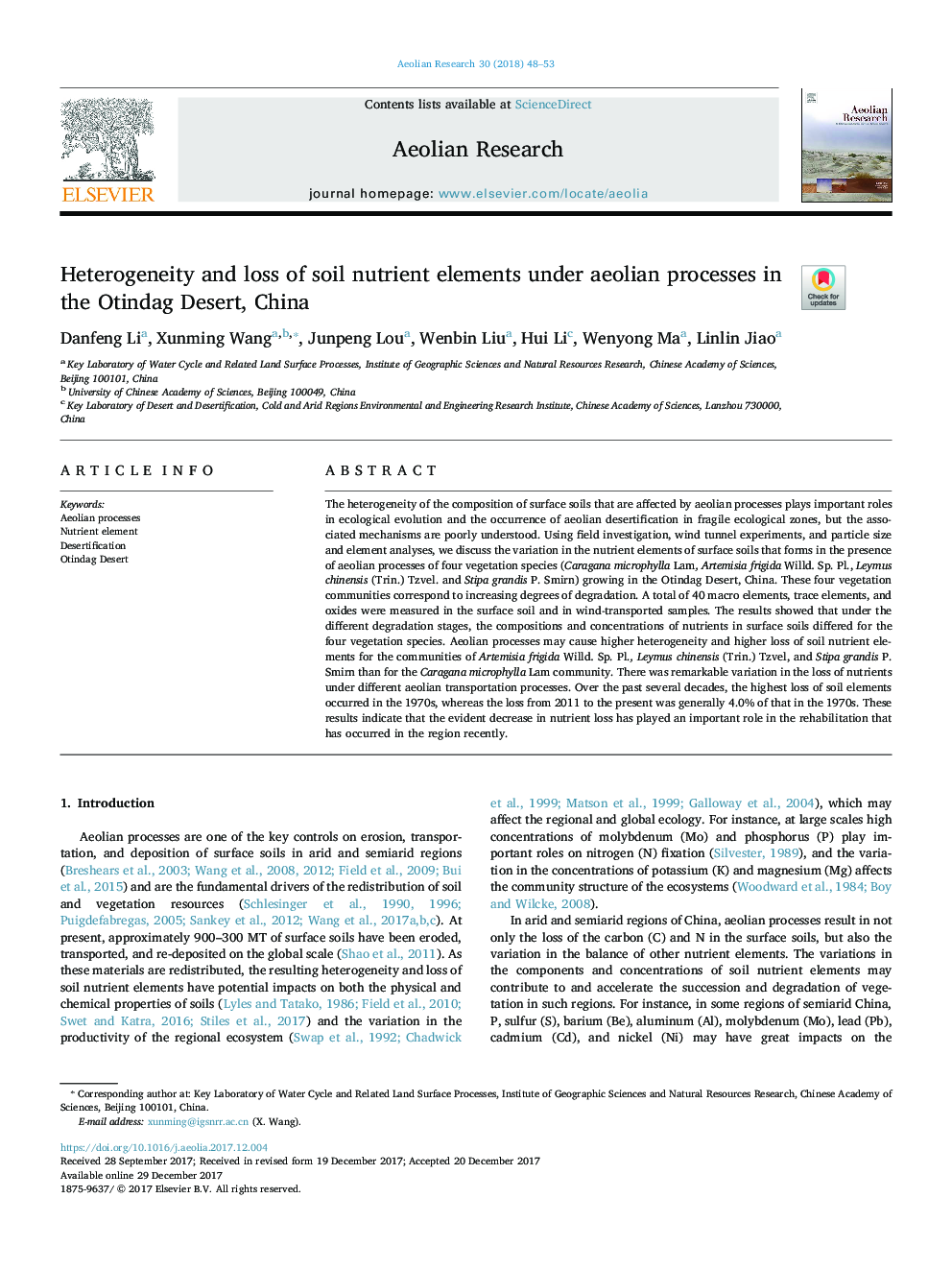| Article ID | Journal | Published Year | Pages | File Type |
|---|---|---|---|---|
| 8906288 | Aeolian Research | 2018 | 6 Pages |
Abstract
The heterogeneity of the composition of surface soils that are affected by aeolian processes plays important roles in ecological evolution and the occurrence of aeolian desertification in fragile ecological zones, but the associated mechanisms are poorly understood. Using field investigation, wind tunnel experiments, and particle size and element analyses, we discuss the variation in the nutrient elements of surface soils that forms in the presence of aeolian processes of four vegetation species (Caragana microphylla Lam, Artemisia frigida Willd. Sp. Pl., Leymus chinensis (Trin.) Tzvel. and Stipa grandis P. Smirn) growing in the Otindag Desert, China. These four vegetation communities correspond to increasing degrees of degradation. A total of 40 macro elements, trace elements, and oxides were measured in the surface soil and in wind-transported samples. The results showed that under the different degradation stages, the compositions and concentrations of nutrients in surface soils differed for the four vegetation species. Aeolian processes may cause higher heterogeneity and higher loss of soil nutrient elements for the communities of Artemisia frigida Willd. Sp. Pl., Leymus chinensis (Trin.) Tzvel, and Stipa grandis P. Smirn than for the Caragana microphylla Lam community. There was remarkable variation in the loss of nutrients under different aeolian transportation processes. Over the past several decades, the highest loss of soil elements occurred in the 1970s, whereas the loss from 2011 to the present was generally 4.0% of that in the 1970s. These results indicate that the evident decrease in nutrient loss has played an important role in the rehabilitation that has occurred in the region recently.
Related Topics
Physical Sciences and Engineering
Earth and Planetary Sciences
Atmospheric Science
Authors
Danfeng Li, Xunming Wang, Junpeng Lou, Wenbin Liu, Hui Li, Wenyong Ma, Linlin Jiao,
